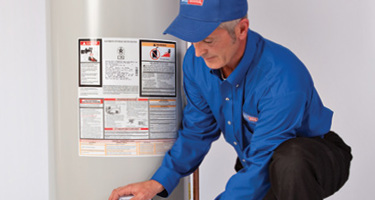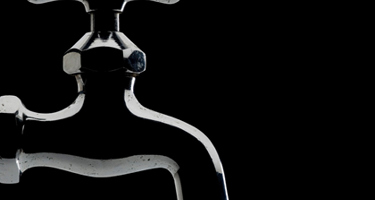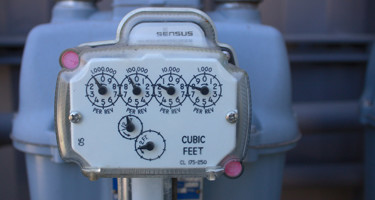
We’ve all been here before, haven’t we? You flush the toilet expecting the bowl to empty as it has countless times before. This time, the water doesn’t empty all of the way. It keeps rising and rising. Suddenly, your toilet is overflowing, and you have a catastrophe all over your bathroom floor.
Plumbing issues can be a real inconvenience for any homeowner. But when you’re having to deal with a toilet overflowing, it can be a nightmare. Toilets are the most commonly used appliances in our homes. They don’t tend to act up often, but when they do, it’s important to act quickly to prevent serious water and drain pipe damage to your home.
At ARS/Rescue Rooter, we understand how frustrating and panic-inducing it can be when your toilet is overflowing, especially if you don’t know what to do when a toilet overflows. Today, we’ll explore the most common causes and how to stop a toilet from overflowing fast.
Need assistance now? Our expert plumbers are here to help you resolve the issue quickly. If you’re experiencing a toilet overflow, call us at 866-399-2885 or schedule a service online today.
Why is My Toilet Overflowing? Top 13 Causes
If your toilet is overflowing, the odds are pretty high that you have a drain clog. A blockage typically causes a sudden overflow when the toilet is flushed.
You can sometimes identify a blockage before it overflows by paying attention to how fast the water re enters your toilet bowl after flushing. If your toilet is prone to clogging, it is best to keep an eye on it after each flush and listen for any gurgling sounds.
Here are the thirteen most common causes of a toilet overflowing:
-
Blocked Vent Pipe: A blocked vent pipe prevents air from entering the plumbing system, leading to a vacuum that hinders proper drainage and can cause your toilet to overflow when flushed.
-
Clogged Drain Line: A clogged drain line is one of the most common causes of an overflowing toilet. This happens when there is a blockage in the pipes, usually from flushing too much waste of non-flushable items.
-
Plugged Sewer Line: The clog might be in the main sewer line for your home or apartment building, as well as in your toilet line. Check the other toilets on the line to see if that’s a possibility.
-
Full or Obstructed Septic Tank: If your septic tank is full or obstructed, it can cause the toilet to overflow as the waste has nowhere to go.
-
High Filler Float: A high filter float can cause the tank to overfill. The float controls the tank's water level. If it is set too high, the water will continue to fill past the proper level, eventually spilling into the overflow tube.
-
Faulty Fill Valve: A faulty fill valve can cause the tank to fill too much. The fill valve manages the water flow into the toilet tank. When it malfunctions, it might not shut off properly.
-
Cracked Overflow Tube: A cracked overflow tube can prevent proper drainage. The overflow tube helps control the tank's water level by allowing excess water to drain into the bowl. If the tube is cracked, it won’t effectively manage the water level.
-
Flushing Too Much Waste and/or Toilet Paper at One Time: Flushing excessive waste or toilet paper at once can create a blockage.
-
Flushing Non-Flushable Items: Using the toilet to dispose of non-flushable bathroom trash, such as pads, tampons, cotton balls, paper, dental floss, or diapers, can cause blockages. These items can get stuck easily in your toilet’s pipes.
-
Flushing Kitchen Waste: Cooking grease, fruit and vegetable peels, and meat trimmings can cause serious clogs. These materials can solidify or become tangled in the plumbing, blocking the flow of water and waste.
-
Disposing of Pet Waste: Even products advertised as flushable may cause problems, including clumps of kitty litter and dog waste bags. These items do not dissolve properly and can accumulate in the pipes.
-
Weak or Partial Flushing: Over time, weak or partial flushes allow clogs to form and grow. Older low-flow toilets and toilets with tank float or flapper problems may be the culprit, as they do not provide a strong enough flush to clear all waste.
-
Leaving Small Children Unattended in the Bathroom: Small children might find it fun to flush various objects. Foreign items like toys and clothing can easily block the pipes.
Remember that the clog may not be in just your toilet’s line but in the main sewer line for your home or apartment building. Fortunately, ARS/Rescue Rooter can help diagnose these issues and provide quality installations and repairs you can rely on. Give us a call at 866-399-2885 today!
How to Stop a Toilet from Overflowing Fast
No matter what led to this situation, you should take some fast-acting steps to take control of the situation. Here’s how to stop a toilet from overflowing fast in three easy steps.
1. Shut Off the Water Supply Using the Toilet Shutoff Valve
First, shut off the water supply to the toilet. Look for a silver football-shaped knob coming out of the wall at the back of the toilet and turn it counterclockwise. This will stop any additional water from flowing into the toilet and worsening the situation.
Homeowners tend to freeze up when they see water running out of their toilet and onto their floor. All you need to remember is to shut off the water supply and water will stop flowing into the toilet and all over your bathroom rug.
2. Check Your Toilet Tank Flapper
Sometimes, the shutoff valves get stuck since they are left open for years and infrequently touched. If your valve is stuck or you cannot reach it, the next solution lies within the toilet tank.
Lift the lid off the top of your toilet and look for your flapper. It’s a rubber disc that covers the hole at the bottom of the tank. If the flapper is open, even just a little bit, water can keep running into the bowl.
Simply push the flapper down with your fingers until the water stops running. You’ll likely need to replace the flapper, but more importantly, this isn’t a permanent fix. You will still need to unclog the toilet.
3. Locate the Toilet Tank Float Ball
If you still have water overflowing at this point, you’ll need to find the float ball inside the take. The float ball looks like a big balloon attached to a rod inside the toilet tank. When raised by the water level in the tank, this ball tells the toilet to stop filling with water after you flush.
To trick your toilet into thinking the tank has filled with water, lift the float ball as high as it goes. Find something to prop the rod and float ball up with while you clean up your bathroom floor and work on unclogging your drain.
If you’re struggling with a toilet overflowing, call ARS/Rescue Rooter at 866-399-2885 to get professional help right away.
Do I Need to Call a Plumber When My Toilet Overflows?
If you can self-diagnose an issue with your tank flapper or float ball, these typically can be fixed yourself by going to your local hardware store and buying replacement parts. If you believe there is a blockage in your drain pipe, try using a plunger or drain snake to clear the drain yourself.
Unfortunately, sometimes there may be other reasons causing your toilet to overflow that can be much more serious. These situations are better trusted to a professional plumber who can remove the worst clogs and check for less common clog causes, like tree roots growing into your sewer line or a broken or collapsed pipe. If clogging is a frequent problem in your home, we may be able to recommend a solution—from new toilet installation to video sewer inspection and pipe repair.
If you believe your toilet or drain needs immediate repair, find your nearest ARS/Rescue Rooter location or call us at 866-399-2885 to book your appointment online right away!
FAQs
How Can I Prevent Toilet Overflows in the Future?
Regular maintenance, avoiding flushing non-flushable items, and inspecting the toilet’s components can prevent overflows. Schedule professional maintenance services to ensure your plumbing system functions properly.
How Do You Unclog a Toilet with High Water?
Turn off the water supply, then use a plunger to create a seal and plunge gently. Alternatively, use a toilet auger to break up the clog.
Can Plunging a Toilet Cause It to Overflow?
Yes, improper plunging techniques can force water and debris back up, causing an overflow. Use gentle, steady plunging to avoid making the problem worse.
Do Toilets Ever Unclog on Their Own?
Occasionally, minor clogs can dissolve or pass through on their own, but it’s not guaranteed. Persistent clogs usually require intervention to prevent overflows.






